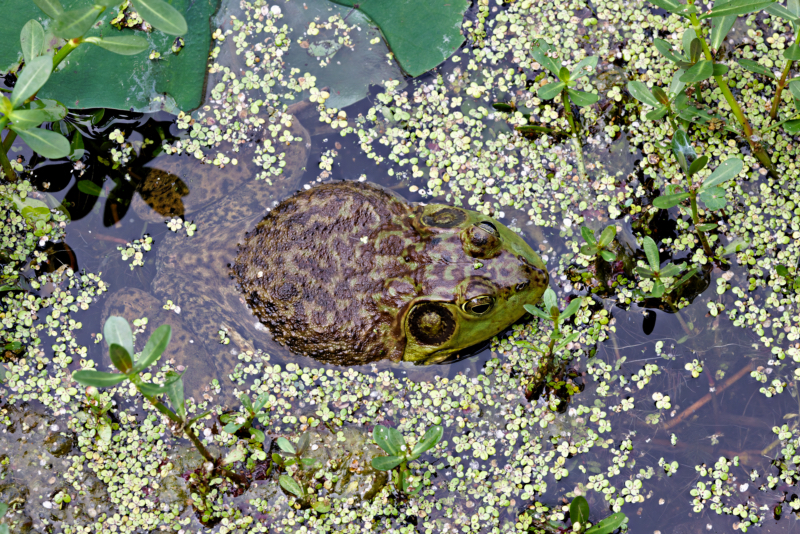On a recent trip to the Sequoyah National Wildlife Refuge in eastern Oklahoma, I had a fun wildlife photography encounter with the state’s official amphibian – the American bullfrog.
I was walking along a fishing pier, admiring the lotus leaves starting to appear in the clear shallow waters around me. Knowing frogs often rest on these broad lily pads, I started scanning a few of the leaves to see if I could spot anything interesting. As I slowly leaned over the railing, a large, round shape emerged from the water right below me. It was an enormous bullfrog, partially submerged and surrounded by duckweed!

I carefully maneuvered my camera into position and took a few photos straight down on the frog in the clear water. At first glance, I didn’t think I had captured anything too special. But after reviewing the images later on my computer, I really grew to like this slightly abstract shot looking down into the water, with the frog’s bright eyes and green head contrasting against the duckweed.
The American bullfrog is the perfect ambassador for Oklahoma’s amphibious residents. These large, loudmouthed frogs are found in permanent bodies of freshwater across the entire state. Their booming “gr-r-r-unnnk” mating calls from male bullfrogs resemble the territorial bellowing of bulls, giving them their fitting name.
Bullfrogs play an important role in Oklahoma’s ecosystems as voracious predators of insects, smaller frogs, fish, snakes, and more. Their huge appetites help control pest populations like mosquitoes. The tadpoles also take their time, sometimes remaining in the larval stage for up to 2 years before metamorphosing into adult frogs. This allows them to grow into the sizeable adults that make such an unmistakable appearance.
While bullfrogs in northern climates hibernate for winter, those in warm states like Oklahoma may remain active year-round as long as the temperatures are mild enough. So keep an eye out for these camouflaged ambush predators lurking among the vegetation in your local ponds and lakes!
My close-up perspective of this particular Oklahoma croaker made for an interesting wildlife portrait. I’m glad I took the time to inspect those lily pads and check out what was lurking just below the surface. You never know what cool creature you might encounter, even in a local nature area!
